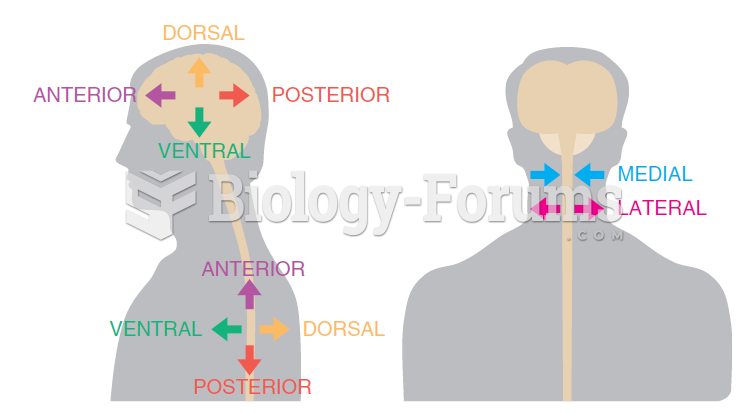|
|
|
By definition, when a medication is administered intravenously, its bioavailability is 100%.
About one in five American adults and teenagers have had a genital herpes infection—and most of them don't know it. People with genital herpes have at least twice the risk of becoming infected with HIV if exposed to it than those people who do not have genital herpes.
Illness; diuretics; laxative abuse; hot weather; exercise; sweating; caffeine; alcoholic beverages; starvation diets; inadequate carbohydrate consumption; and diets high in protein, salt, or fiber can cause people to become dehydrated.
Adult head lice are gray, about ? inch long, and often have a tiny dot on their backs. A female can lay between 50 and 150 eggs within the several weeks that she is alive. They feed on human blood.
The U.S. Pharmacopeia Medication Errors Reporting Program states that approximately 50% of all medication errors involve insulin.
 Much of the dark space between stars, as seen in the sky of the image above, is due to the human eye
Much of the dark space between stars, as seen in the sky of the image above, is due to the human eye
 The frontal lobe (green) bounded by the Sylvian fissure (yellow line) and central sulcus (red line),
The frontal lobe (green) bounded by the Sylvian fissure (yellow line) and central sulcus (red line),





